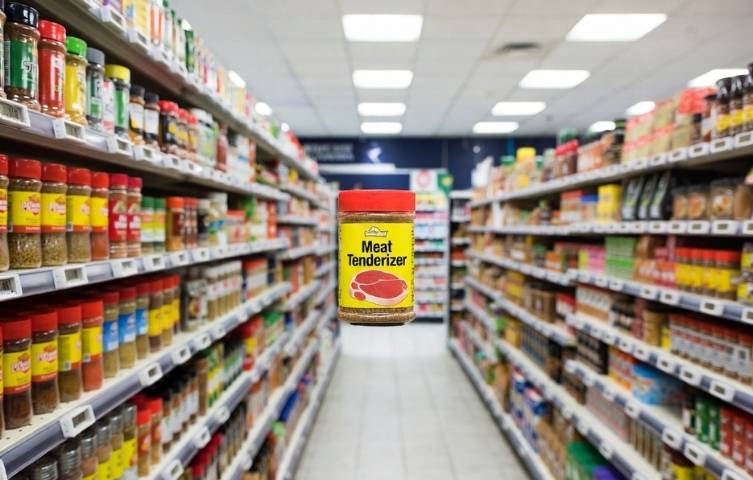You’re not alone if your love for spicy food has suddenly left you wincing at a jalapeño. Many spicy food aficionados ask this exact question—why can’t I eat spicy food anymore? Whether it’s an uncontrollable burn, discomfort in your stomach, or an outright unwillingness from your taste buds, losing the ability to enjoy spice can be frustrating.
This blog explores why your body or palate might no longer tolerate spicy foods. From changes in taste perception to medical conditions, we’ll cover the likely causes and share some tips to help you enjoy the heat again.
Understanding Spice Sensitivity
Spice sensitivity refers to how your body reacts to capsaicin, which gives chili peppers heat. Eating spicy food doesn’t cause physical damage—it’s all about how your body interprets the burn. Capsaicin interacts with pain receptors in your mouth, sending signals to your brain that say, “Fire alert!” For some, this triggers watering eyes, a burning sensation, and even a rush of endorphins. But why does sensitivity to this burn change?
Is Your Tolerance Getting Worse?
If you’ve noticed an increasing sensitivity to spice, one common explanation could be changes in your spice tolerance over time. Similar to building tolerance for coffee, alcohol, or exercise, capsaicin tolerance depends on regular exposure. If you’ve been eating milder food lately, your body may be out of practice, making even mild hot sauces feel overwhelming. Your spice tolerance may have weakened because you’re not challenging it as often.
Possible Causes Behind Spicy Food Intolerance
Sometimes, the inability to enjoy spicy food isn’t just about lost tolerance—it could be your body signaling something deeper. Here are a few reasons why spicy foods might not work for you anymore.
1. Aging and Changes in Taste Buds
As we age, our taste buds naturally decline in number and sensitivity. This can affect how we perceive flavors, including spiciness. Spicy food might not taste the way it used to, or it could feel more intense than before. Additionally, aging can slightly alter digestive functions, which could make spicy food harder to tolerate.
2. Gastroesophageal Reflux Disease (GERD)
GERD is a common condition that affects many adults. It occurs when stomach acid flows back into the esophagus, causing heartburn. Spicy foods are known to aggravate GERD symptoms. If you feel a burning sensation in your chest or throat after eating spicy dishes, GERD might be the culprit.
Tip: If GERD is an issue, eating smaller meals, avoiding late-night meals, and focusing on milder spices (like paprika) instead of chili peppers could help.
3. IBS or Digestive Issues
Irritable Bowel Syndrome (IBS) or other gastrointestinal conditions can lead to a lower tolerance for spicy food. Capsaicin in chili peppers might irritate sensitive stomachs or intestines, causing abdominal cramping, diarrhea, or bloating.
4. Allergies and Sensitivities
Sometimes, it may not be a spice tolerance issue. Instead, you could have developed a mild allergy or intolerance to capsaicin or other components in spicy food. This could explain reactions like excessive sweating, flushing, nausea, or skin rashes after a spicy meal.
5. Stress and Emotional Factors
Stress impacts how your body digests food, often making it harder to tolerate spicy meals. High cortisol levels can lead to slower digestion or increased gut sensitivity, making you uncomfortable after indulging in spicy dishes.
Tip: If stress is the factor, mindfulness-based eating practices or reducing stress through exercise or meditation may help.
How to Rekindle Your Relationship with Spice
Are you not quite ready to give up your favorite spicy dishes? The good news is that, in many cases, you can regain your spice tolerance or adjust your approach to enjoy the heat without discomfort.
1. Start Small and Work Your Way Up
Rebuild your spice tolerance slowly by trying milder options like smoked paprika, mild peppers, or chili seasoning blends. Gradually work your way up to spicier choices.
2. Pair Spicy Foods with Cooling Elements
Neutralize the burn by combining spicy foods with cooling ingredients like yogurt, sour cream, or coconut milk. These can help balance the heat while reducing irritation.
Pro Tip: Milk contains casein, a protein that binds to capsaicin and helps ease the burning sensation.
3. Watch Portion Size
Instead of finishing off a plate of spicy curry, start with smaller portions to see how your body reacts. You can always work your way up to larger servings.
4. Try Spice Alternatives
Opt for warming spices such as cinnamon, ginger, or cardamom. While not hot, they add complex flavor profiles and subtle “heat” to your dishes without overwhelming your taste buds.
5. Consult a Doctor if Necessary
If spicy food causes severe discomfort or unusual symptoms, consult a healthcare professional to rule out conditions like GERD, IBS, or food allergies. This is especially important if your symptoms seem to worsen over time.
Could It Be a Good Thing?
While losing your tolerance for spicy food might seem disappointing, it could also be a chance to explore other incredible flavor profiles. The culinary world is filled with ingredients that bring just as much excitement to your palate as heat.
Experiment with umami-rich flavors like mushrooms, miso, or soy sauce, or explore sour and tangy dishes that communicate intensity in new ways. Who knows? You might discover an entirely new food obsession.
Rediscover the Joy of Food
There’s no need to panic if you’ve grown sensitive to spice due to age, stress, or digestive issues. There are plenty of solutions to help you enjoy those fiery flavors once again—or discover delicious new ones to fall in love with.
Your taste buds are a lifelong adventure, so savor every step of the way—even the gentler spice journeys. Consider keeping a food journal to track how your body reacts to specific meals and find the perfect balance for your lifestyle.
And remember, food doesn’t have to be spicy to pack a punch. It just needs to be flavorful.


